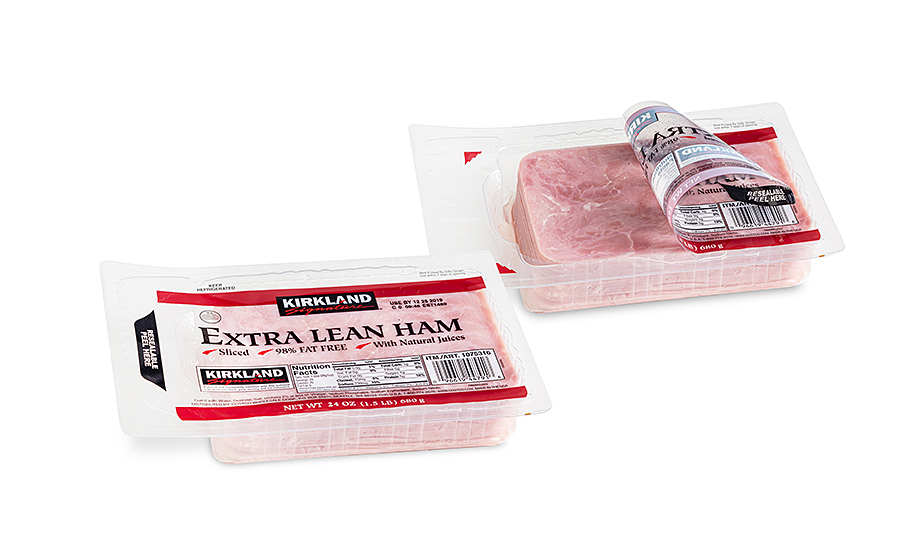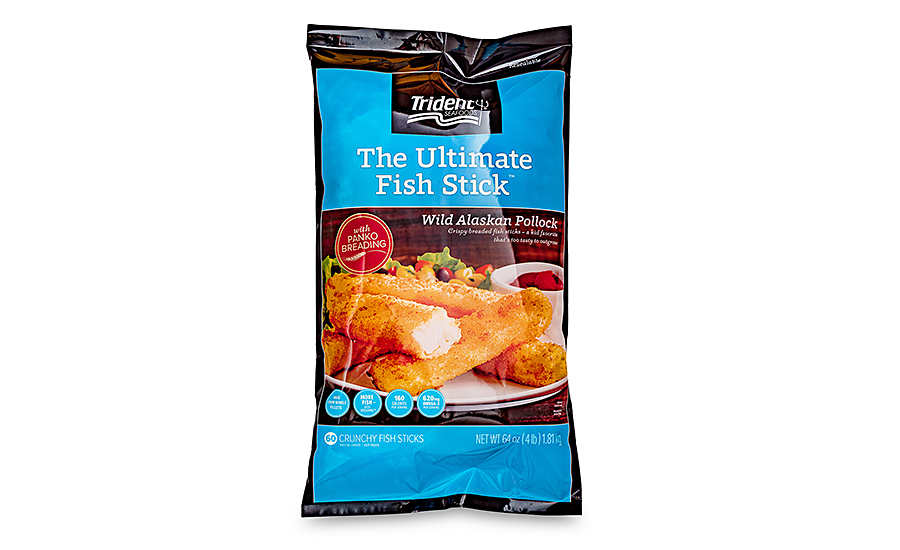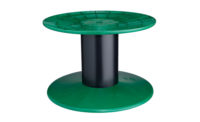Meat, poultry and seafood processors benefit from an ever-increasing array of flexible packaging options with product-differentiating features, enhanced functionality and more sustainable structures. Processors like flexible packaging because it is lightweight, can protect product quality and deliver benefits such as easy-open/reclose and shorter cooking times to the consumer.
Flexible packaging also offers numerous formats: bags, standup pouches, flow packs, conventional and shrink lidstock, and film for skin and vacuum packaging.
Shelf impact
Eye-catching graphics and visual effects, distinctive silhouettes that mimic the product shape or an unexpected tactile experience can differentiate products. One option for a different texture experience is a food-grade coating that mimics sandpaper.
A paperlike texture helps capture attention for pouches of Full Moon Natural pet treats. The design, which won a Silver Award — Technical Innovation in March 2020 in the 64th Annual Flexible Packaging Achievement Awards Competition, also features a combination of a matte finish and gloss printing to employ a triumvirate of eye-catching features. According to the Flexible Packaging Association (FPA), the sponsor of the competition, “This printing innovation helps the package deliver enhanced branding for authenticity, quality and differentiation.”
High-quality printing that delivers shelf impact also was recognized in the FPA competition. A Silver Award — Printing was given to a resealable bag for Trident Seafoods’ The Ultimate Fish Stick product. According to the judges, the flexo-printed package exhibits sharper images, cleaner details and better color than its rotogravure-printed predecessor.

Enhanced functionality
For enhanced functionality, the latest coextruded films combine lower density with improved machinability and sealing properties without affecting toughness. The result is higher packaging speeds, enhanced productivity and the potential for downgauging, which has a positive effect on environmental and cost profiles. For films destined for freezer applications, low-temperature toughness and a low seal initiation temperature can improve package integrity and reduce the chance of leakers.
When antifog properties are needed, film traditionally has been coated with an antifog agent to protect product visibility. A coextrusion process can eliminate the post-extrusion coating step by integrating the antifog capability directly into the film.
With today’s improved barrier films, it’s possible to increase the shelf life of refrigerated meat for more than three weeks. This freshness extension reduces food waste and shrink at the retail level, thereby boosting sales and profits for all partners in the supply chain and enhancing sustainability.
In the easy-open/reclose realm, a recently introduced resealable, tamper-evident label shows whether the package has been opened anywhere along its perimeter. The innovation, which improves on existing designs that limit tamper-evident qualities to the peel tab and corners, won a Silver Achievement Award — Technical Innovation in the FPA competition.
Another winner, the recipient of two Silver Achievement awards, one for Packaging Excellence and one for Technical Innovation, relies on thin (less than 1.75 millimeters) forming and non-forming films with high oxygen barrier properties and strength. The Cargill Grab N’ Go high-barrier, modified-atmosphere package for sliced deli meat offers the convenience of the polyethylene zipper bags typically used at deli counters but provides substantially longer shelf life.

More sustainable structures
Although shelf impact and functionality generate considerable interest among processors, sustainability seems to be receiving even more attention with a particular focus on renewable materials, easily recycled materials and recycled content.
For retort pouches, an all-polyester structure delivers ultra-high barrier and hermetic seals. Designed to be recycled in the No. 1 polyester stream, it replaces the foil laminates currently in use for products such as tuna. The FPA judging panel was so impressed with the recyclable structure that it awarded the concept a Gold Award — Sustainability and two Silver Awards, one for Technical Innovation and one for Packaging Excellence.
Another recyclable pouch, this one for Hill’s Science Diet pet treats, received similar recognition: a Gold Award — Packaging Excellence and two Silver awards, one for Sustainability and one for Technical Innovation. Using compatible additives ensures the ethylene vinyl alcohol layer in the polyethylene barrier laminate will not have negative effects on the recycling stream. A combination of new materials, equipment and processing methods ensures a high-quality appearance and maximum functionality for features such as easy-open/reclose.

A recycled-content film is being used by Zur Mühlen Gruppe in packaging for its new Gutfried organic poultry sausage. About two-thirds of the content of the multilayer film consists of materials that have been chemically recycled from mixed plastic waste. The company decided to adopt the packaging because “our customers increasingly value sustainability,” says Maximilian Tönnies, managing director of Zur Mühlen Gruppe. NP




Report Abusive Comment